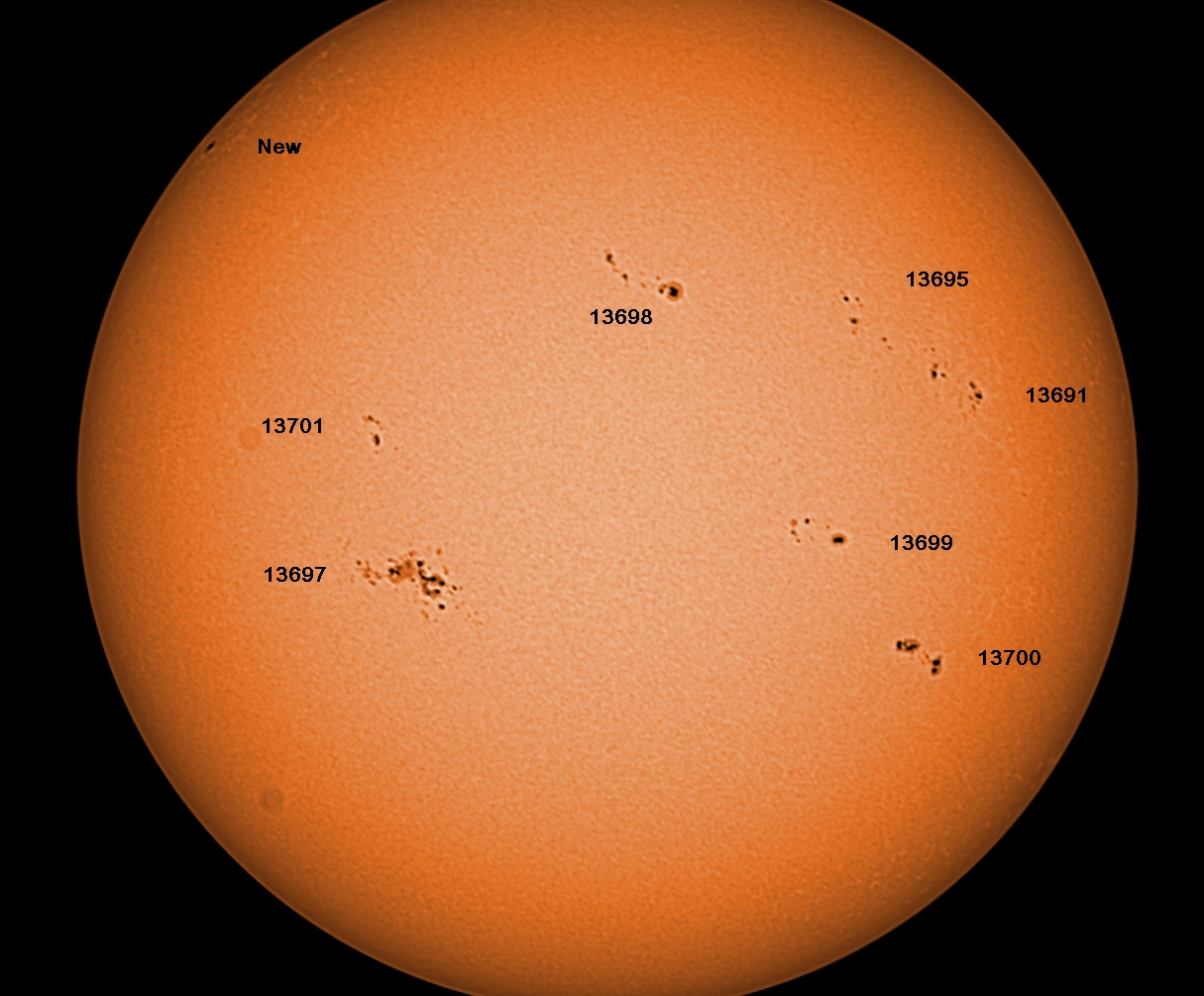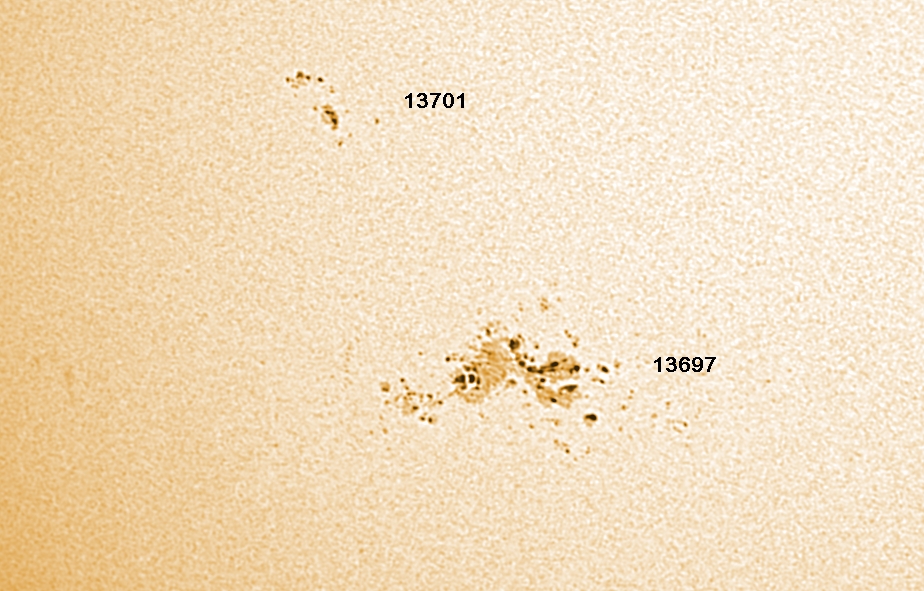Seeing was quite good this morning with a 90% blue sky and good clarity.
My sunspot count went well so I decided to do a bit of imaging.
I was particularly interested in AR 13697, which was previously AR 13664 and responsible for the multiple X and M flares and the Aurora from just over 2 weeks ago. Described in some quarters as 'the Beast'. This is a large sunspot group, approximately 20 degrees in width and has been very active. Although not quite as dynamic (so far) this time around it is still crackling with flares.
Equipment used was:
White Light:
- SVBONY 80mm F7 Refractor
- EQ5 mount with RA drive (not particularly well polar aligned)
- Baader Modular Barlow lens
- ZWO ASI 137MM Camera with Solar Continuum and IR/UV block filter
Hydrogen Alpha
- Lunt ST60 Telescope
- EQ5 mount as above
- Baader Modular Barlow lens
- ZWO ASI 137MM Camera
Processing:
- SharpCap 4.1
- Autostakkart 4
- Registax 6
- Gimp to colourise the images
- Irfanview to flip and minor cropping.


This images shows the granulation on the photosphere. These are enhanced by using a Solar continuum filter. Granulation is caused by cells of Hydrogen rising and falling as they heat and cool.

This Ha image shows AR 13697, lower left. The dark band is a large filament tracking NW to SE. Other filaments around 13697 are also quite clear, the hoop is certainly an interesting shape.

Ha imaging captures detail in the chromosphere. This can be considered to be the 'atmosphere' of the sun and extends outward transitioning and increasing in temperature through to the extremities of the Solar Corona. The detail that can be observed in the chromosphere is remarkable even with a small 60mm objective telescope.
